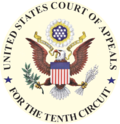 By Brad Cave
By Brad Cave
Friendship, cronyism, nepotism, affairs – many types of personal relationships may result in one employee being treated better than another employee. But is that favoritism discriminatory? Does the non-favored employee have a discrimination claim against the employer? No, Title VII does not prohibit favoritism based on a special relationship, says the Tenth Circuit Court of Appeals.
“I Like You Best”
If an employer pays the CFO’s sister a higher wage than other employees doing similar work, offers the most lucrative deals to an employee who is the boss’s best friend or gives playoff tickets as a bonus to the manager’s boyfriend who works at the company, that special treatment is permissible because it is based on the special relationship or bond between the parties, not on a protected characteristic. It is only when the differential treatment is based on an impermissible classification, such as gender, race or age, that it crosses the line into unlawful discrimination. In a recent decision, the Tenth Circuit Court of Appeals affirmed that distinction, ruling that a supervisor’s favoritism toward a female subordinate based on their purported intimate relationship did not amount to reverse gender discrimination against her male counterpart. Clark v. Cache Valley Elec. Co., No. 13-4119 (10th Cir. July 25, 2014).
Reverse Gender Discrimination Under Title VII
Project manager Kenyon Brady Clark sued his employer, Cache Valley Electric Company, alleging violations of Title VII. Clark’s discrimination claim alleged that his supervisor, Myron Perschon, favored a female project manager, Melissa Silver, over him because Perschon and Silver were in a romantic relationship. Clark asserted that Perschon gave Silver better work assignments, paid her more for performing less work and performed most of Silver’s job duties himself. Although it turned out that there had been no affair, Clark still asserted that “whether they were having sex or not, there was favoritism.” When asked about the reason for the favoritism at his deposition, Clark admitted that if the favoritism was not due to a romantic relationship, he did not know the reason for it.
The Court analyzed Clark’s claim as a reverse gender discrimination case under which Clark needed to show circumstances that would support an inference that his employer discriminates against the majority (i.e., males) or that “but for [his] status the challenged decision would not have occurred.” Significantly, Clark did not assert that the favoritism was due to Silver being a female or that Cache Valley treated women more favorably than men. Instead, Clark focused on the preferential treatment that his supervisor offered to one specific female employee. That deficit was fatal to his reverse gender discrimination claim. The Court cited numerous cases where the motives for preferential treatment were other special relationships, such as friendship, nepotism or personal fondness or intimacy, in which it had ruled that such favoritism was not within the purview of Title VII’s anti-discrimination provisions. Because Clark’s discrimination claim was based only on the favoritism shown to a special friend and not on a protected characteristic, his claim was not covered by Title VII. The Court affirmed summary judgment in favor of Cache Valley.
Retaliation Claim Fails Too
Clark also raised a retaliation claim in his lawsuit against Cache Valley. Clark asserted that his supervisor, Perschon, retaliated against him by trying to get a competitor to hire him, refusing to communicate with him and otherwise distancing himself from Clark. Clark also alleged that he was fired in retaliation for complaining about Perschon’s favoritism and retaliation. He had complained to management about the alleged affair between Perschon and Silver, stating that it was difficult to continually respond to vendors and suppliers who had questions about the purported relationship. He reported that they were acting like a married couple. He later complained about the preferential treatment that Silver received from Perschon, including receiving better job assignments and higher bonuses. In a letter to the company’s CEO and to human resources, Clark wrote that over the past three years, he had personally and professionally suffered serious and real adverse effects to his employment due to the alleged affair. He wrote that the affair created a hostile work environment and that it was the company’s responsibility to ensure that the workplace was free of harassment and retaliation. Shortly after meeting with HR and the company’s legal counsel to discuss his letter, Clark was terminated.
The Court rejected Clark’s retaliation claim. To make out a Title VII retaliation claim, Clark needed to show that (1) he engaged in protected opposition to discrimination, (2) a reasonable employee would have found the challenged action materially adverse, and (3) a causal connection existed between the protected activity and the materially adverse action. The Court concluded that Clark failed to show that he engaged in protected opposition to discrimination. He needed to show that he had a reasonable good-faith belief when he complained to the company that he was engaging in protected opposition to discrimination and that his good-faith belief was reasonable both subjectively and objectively. He failed to do so. Although he made statements about a “hostile work environment” and “discrimination” in his complaints to the company, the Court found such statements to be conclusory and not related to gender discrimination. The statements were about Perschon’s favoritism to Silver based on the alleged inappropriate relationship, which was not gender discrimination. Therefore, Clark’s retaliation claim failed.
Just ‘Cuz It’s Legal Doesn’t Make It Smart
Clark’s reverse discrimination claim was a little more cut and dried than most because he essentially admitted that the preferential treatment shown by his supervisor to a female colleague was not due to her status as a female. Consider whether the outcome would have been different had Clark provided evidence that the supervisor historically treated women better than men. Or think about other situations where special relationships result in favoritism, such as when the boss takes all his male cronies to play golf with clients while the female employees toil away at work. Even though the courts have been clear about distinguishing favoritism based on special relationships from discrimination based on a protected class, employers are wise to steer clear from favoring some employees over others, especially when it comes to pay, bonuses and benefits where the non-favored employees can prove financial harm. Keeping the terms and conditions of employment on an even footing will help keep your workplace productive, the morale of employees high and your company out of court.





